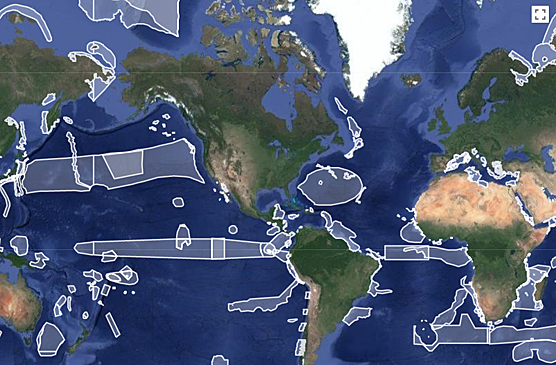
Ecologically or biologically significant marine areas of the World. © Picture: 2018 Nasa,TerraMetrics
Ecologically or Biologically Significant Marine Areas have been proposed for different parts of the planet, but not yet for the Baltic Sea. SYKE research professor Markku Viitasalo and researcher Juho Lappalainen were closely involved last week in a working group in Helsinki for naming the EBSA areas. As a result, nine proposals were made for different parts of the Baltic Sea. The proposed areas cover 23 percent of the surface area of the Baltic Sea.
"Finland made four strong and very well founded proposals for the Baltic Sea. Finland's advantage is that it has the strongest survey information of the Baltic Sea, which has come through the Finnish Inventory Programme for the Underwater Marine Environment, VELMU. Other information on birds and seals, for instance, was also actually used", says Markku Viitasalo.
Finland's proposals were sufficiently convincing for Sweden and Russia to want to combine their own proposals with them. Consequently, the proposals became Swedish-Finnish (northern part of the Bay of Bothnia, the Kvarken archipelago, the Sea of Åland, the Åland Islands, the Archipelago Sea) and Finnish-Russian (eastern Gulf of Finland). There are five other areas and they are located in the central and southern parts of the Baltic.
"It is great and at the same time challenging that we ended up on the same line with the whale-rich upwellings of Africa, the coral reefs of Indonesia, and the underwater mountain ranges of the Pacific Ocean. It may be difficult to understand that we have living environments that are just as unique. For instance, nowhere else in the world can we find as special a combination of fresh water and salt water species, or as varied an archipelago as our Archipelago Sea has, or as stunning a coastline modified by the Ice Age as there is in the Kvarken", observes researcher Juho Lappalainen.
A decision on the EBSA areas will be made in November in Egypt. A total of 279 areas have been identified and they cover about 19 percent of the surface area of the world's seas. The areas are not protected areas, but information on them can be utilised in fields such as maritime spatial planning, the development of protected area networks and in the protection of species and habitats.
Further information:
Research professor Markku Viitasalo, Finnish Environment Institute (SYKE)
tel. +358 295 251 742, firstname.lastname@ymparisto.fi
More about the topic: